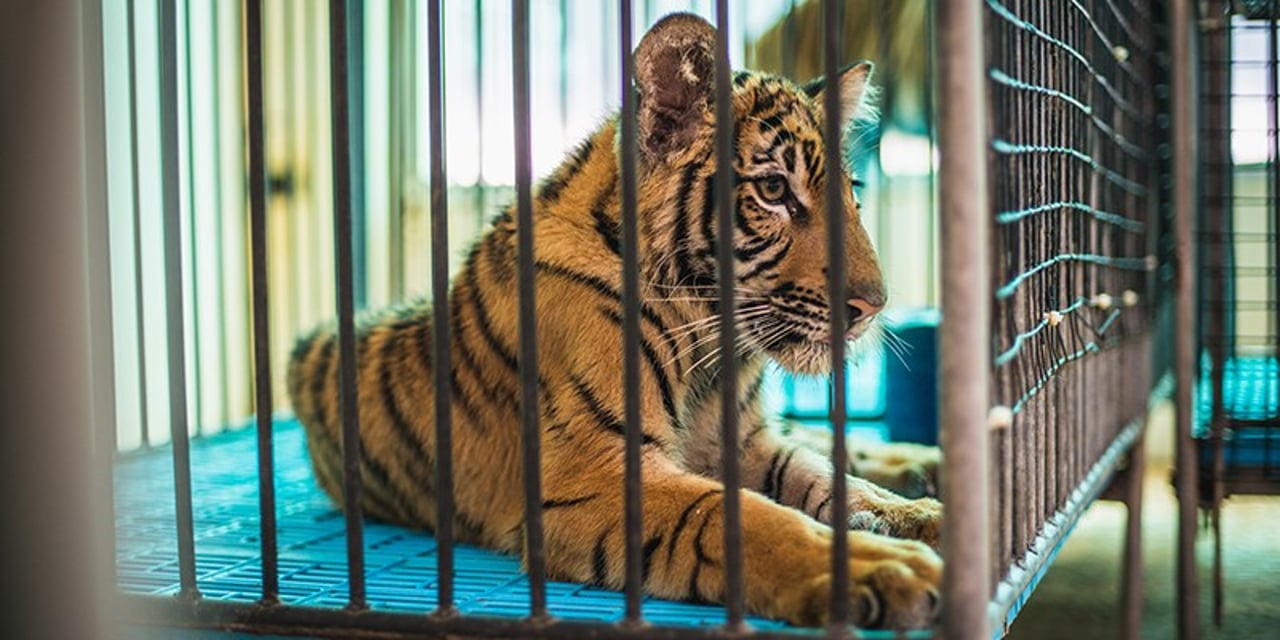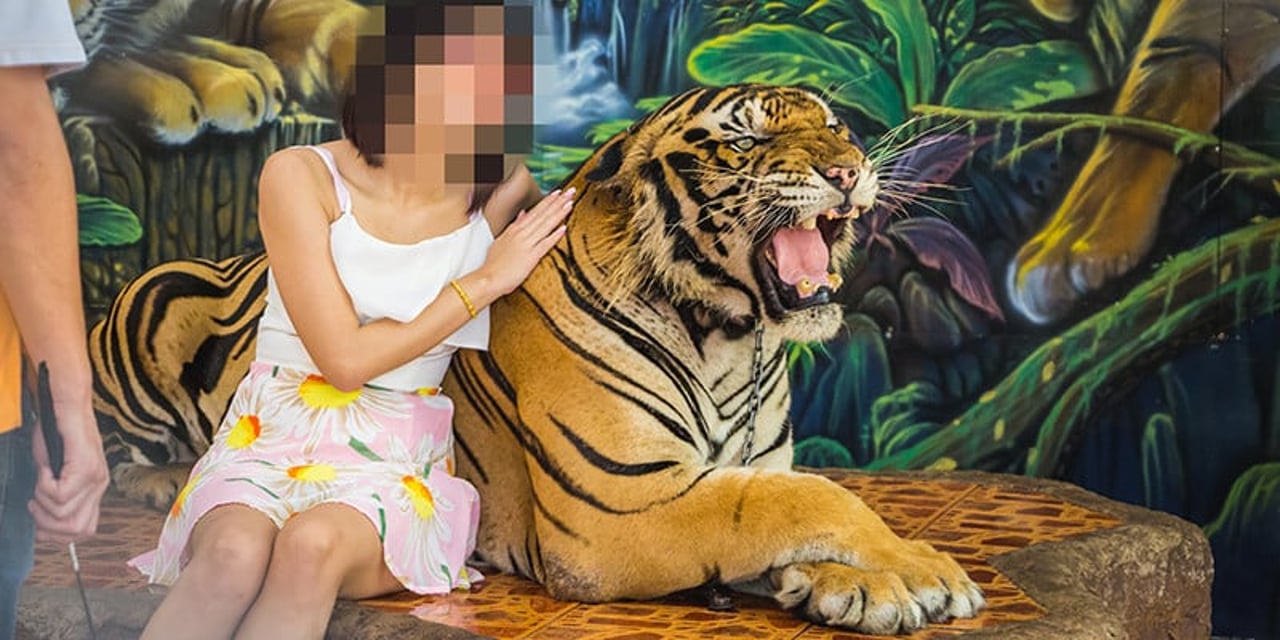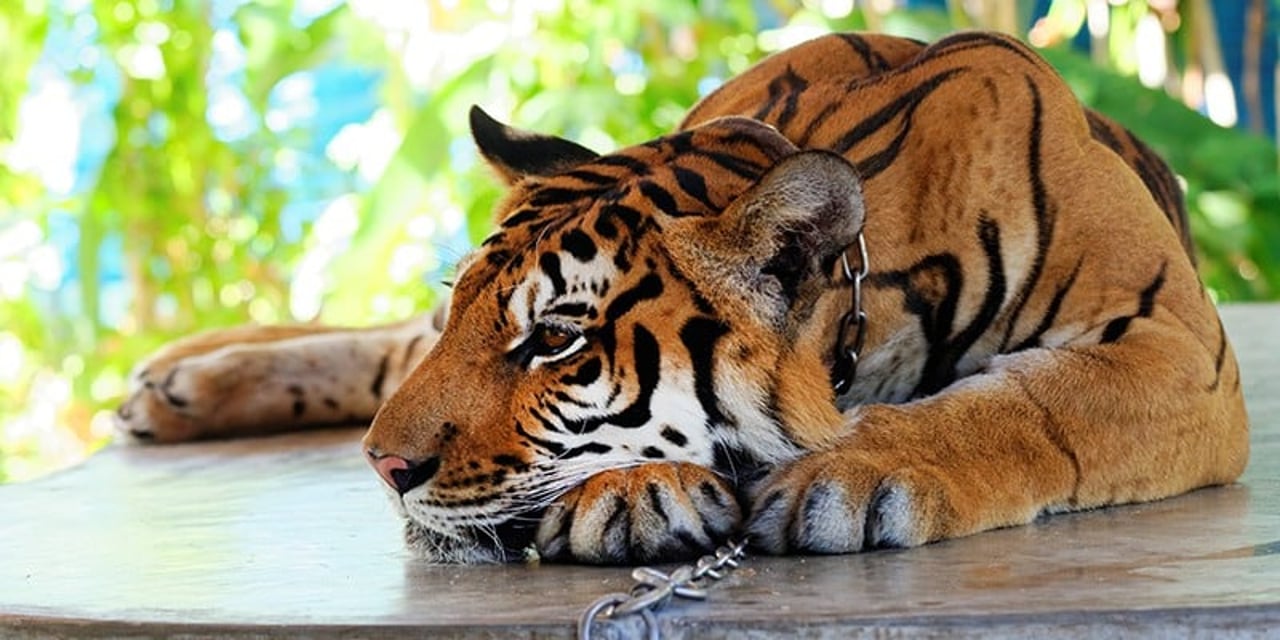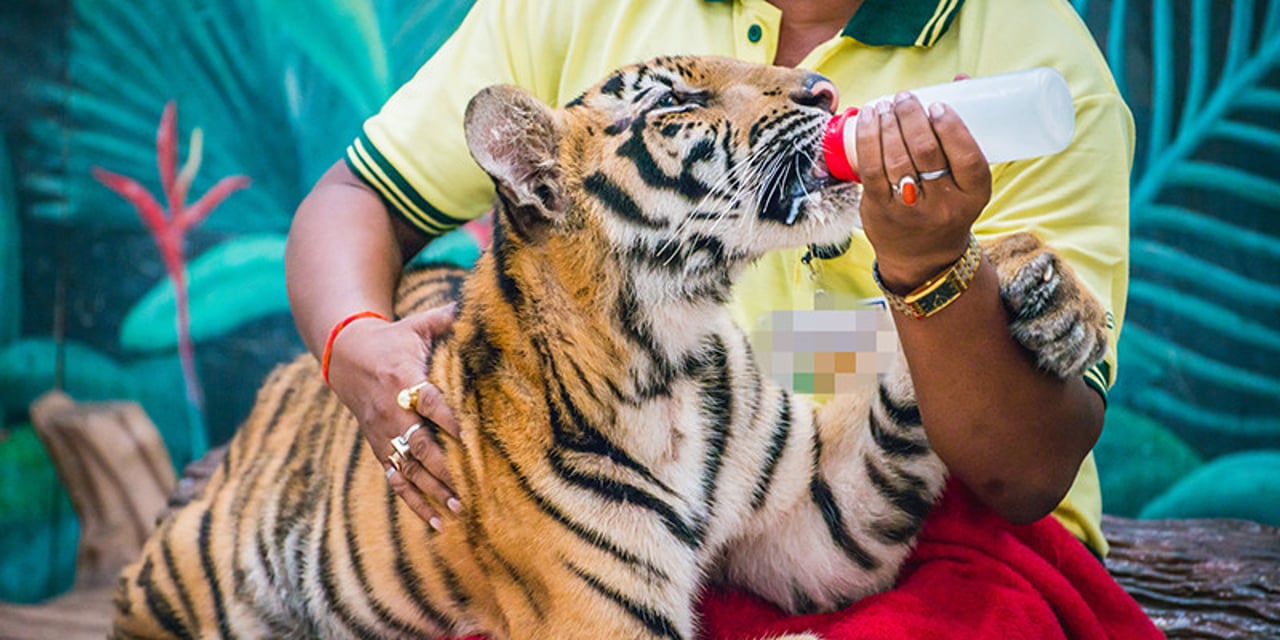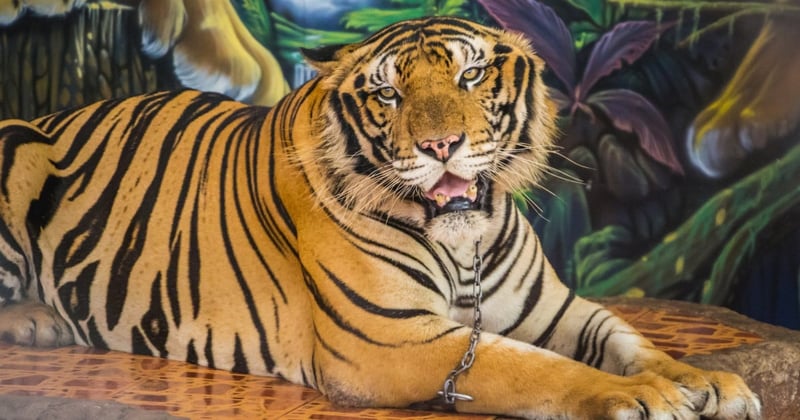
Here's what's wrong with the Netflix sensation everyone is talking about. Delve into the untold side of the Tiger King as we uncover the concerns that were left unaddressed in the widely discussed series.
‘Have you seen Tiger King yet?’
I’m pretty sure we’ve all been asked this question since the documentary landed on Netflix, each time with wide eyes and an incredulous voice.
Tiger King: Murder, Mayhem and Madness is a seven-episode docuseries about people who own and breed tigers, lions and other big cats in the USA and if you have seen any of it, you’ll know that the larger than life characters make it hard to look away.
In the first two minutes we hear the shocking statistic that there are more captive tigers in the US today than there are in the wild throughout the world, cut with footage of a man cuddling what looks like an adult liger (a lion bred with a tiger) and somebody bottlefeeding a tiger with a chain around its neck. Two minutes that summarise a lot of the problems in wildlife tourism.
However the documentary then rolls into a bizarre soap opera-esque tale which sadly somewhat detracts from the tigers themselves.
So here’s what this year’s TV sensation doesn’t tell us.
Wildlife trade ban
Wildlife tourism is big business, worth up to $250 billion (USD) across the world annually. This includes tiger selfies, elephant rides, dolphin shows – anywhere that captive wild animals are used to entertain visitors.
It is estimated that globally wildlife tourism attractions condemn around 550,000 wild animals to appalling, mostly unseen suffering. Visitors are often oblivious to the horrific abuse and conditions that animals endure for tourist entertainment.
There are around 4000 tigers left in the wild. As we learn in Tiger King, there are more tigers than this in captivity in the USA. On top of this, there are many more big cats, mostly lions and tigers, across the world being farmed in cruel conditions and then traded legally or illegally to fuel the tourist entertainment as well as the traditional medicine industry. They suffer a whole cycle of exploitation.
Suffering for a lifetime
For captive big cats, their exploitation starts from a young age with early removal from their mothers. In the wild, tiger cubs stay with their mothers until they are about 2 years old. In Tiger King we see the park owner, Joe Exotic, take a cub away from its mother at just a few hours old to hand-rear it so that it can be handled by visitors, passed from person to person for photos.
However tiger cubs grow up quickly and a full-grown tiger can weigh over 300 kg.
For a venue owner, this creates two problems. Firstly the need for more cubs – they are undeniably cute and are a huge draw for visitors so a breeding programme is needed for an ongoing supply and so begins a horrific never-ending cycle for the sole purpose of keeping the tourist activities going. The industry of cub petting is responsible for a surplus of tigers (and other big cats) in captivity, as well as intensive breeding practices which can cause deformities.
The second problem for the venue owner is that you end up with a lot of adult big cats, all with big appetites which makes their upkeep expensive. Some of them can be used as photo props which is another way to bring in tourists’ money. Adult tigers are usually chained, sometimes drugged, to reduce the threat to the visitor.
It is not always clear what happens to the ‘surplus’ cubs that cannot be used for breeding or photo props when they are fully grown but it is clear that the captive breeding of tigers in this way serves no conservation purpose. In fact, it has been linked to the illegal trade in tiger products, sustaining a demand for products that continues poaching pressure on wild tigers as well.
Tigers in the wild
There are less than 4000 tigers left in the wild, mostly in the Indian subcontinent, Siberia and Sumatra.
Tigers are solitary territorial animals and can have home ranges of almost 300km². Weighing at times over 300kg and with a length of approximately 3 meters, tigers are the largest member of the cat family. They are incredibly agile and fast, and can jump more than 10 metres. Unlike other cats, they love water and are good swimmers. In captivity, a tiger’s natural behaviours and movements are extremely restricted, causing stress, boredom, and frustration. Tigers are evolved to survive in the wild; they are not domesticated and do not belong in captivity.
Tigers in captivity
Captive tigers often show stereotypical behaviours, such as pacing, which is a strong indication that the animal is experiencing stress. Throughout Tiger King, we see Joe Exotic’s tigers pacing in their enclosures, panting, walking back and forth in the same tiny space. It’s the heartbreaking reality of keeping these intelligent, magnificent animals locked up for human entertainment.
Another common sight in captivity is tigers in poor physical condition, either being overweight due to an improper diet and a lack of exercise, or underweight due to stress, illness or having to compete for food. Many of the tigers in Tiger King appeared to have a poor body condition, which might not be surprising since it was admitted in the show that it was challenging to provide a wholesome diet for the animals.
What can we do?
We need to end the cycle of suffering and make this the last generation of tigers bred into a lifetime of abuse. Because tigers are wildlife, not entertainers and not medicine.
- Avoid venues where there are tigers performing tricks or where you can take a selfie with them.
- Avoid any kind of cub-petting experience as it just continues the cycle of exploitation.
- Tell friends and family about the issues behind these forms of wildlife tourism.
- If you love tigers, view them in their natural habitats or in a proper wildlife sanctuary – making sure your trip is organised by a responsible travel company that takes animal welfare seriously. Be a responsible tourist and help change the system.
Make a difference. Join our community.
We campaign to improve animals' lives in the UK and around the world. Why not join us today?
References
- Tiger selfies exposed: A portrait of Thailand’s tiger entertainment industry (2016) World Animal Protection
- Simcharoen, A., Savini, T., Gale, G. A., Simcharoen, S., Duangchantrasiri, S., Pakpien, S., & Smith, J. L. (2014). Female tiger Panthera tigris home range size and prey abundance: important metrics for management. Oryx, 48(3), 370-377.
- For more information about the tiger trade, take a look at BBC’s ‘Tigers: Hunting the Traffickers’ available on iPlayer (contains strong language and upsetting scenes).

